John Siberch: Cambridge’s first printer (and record debtor?)
2021 is the 500th anniversary of the first works printed in Cambridge
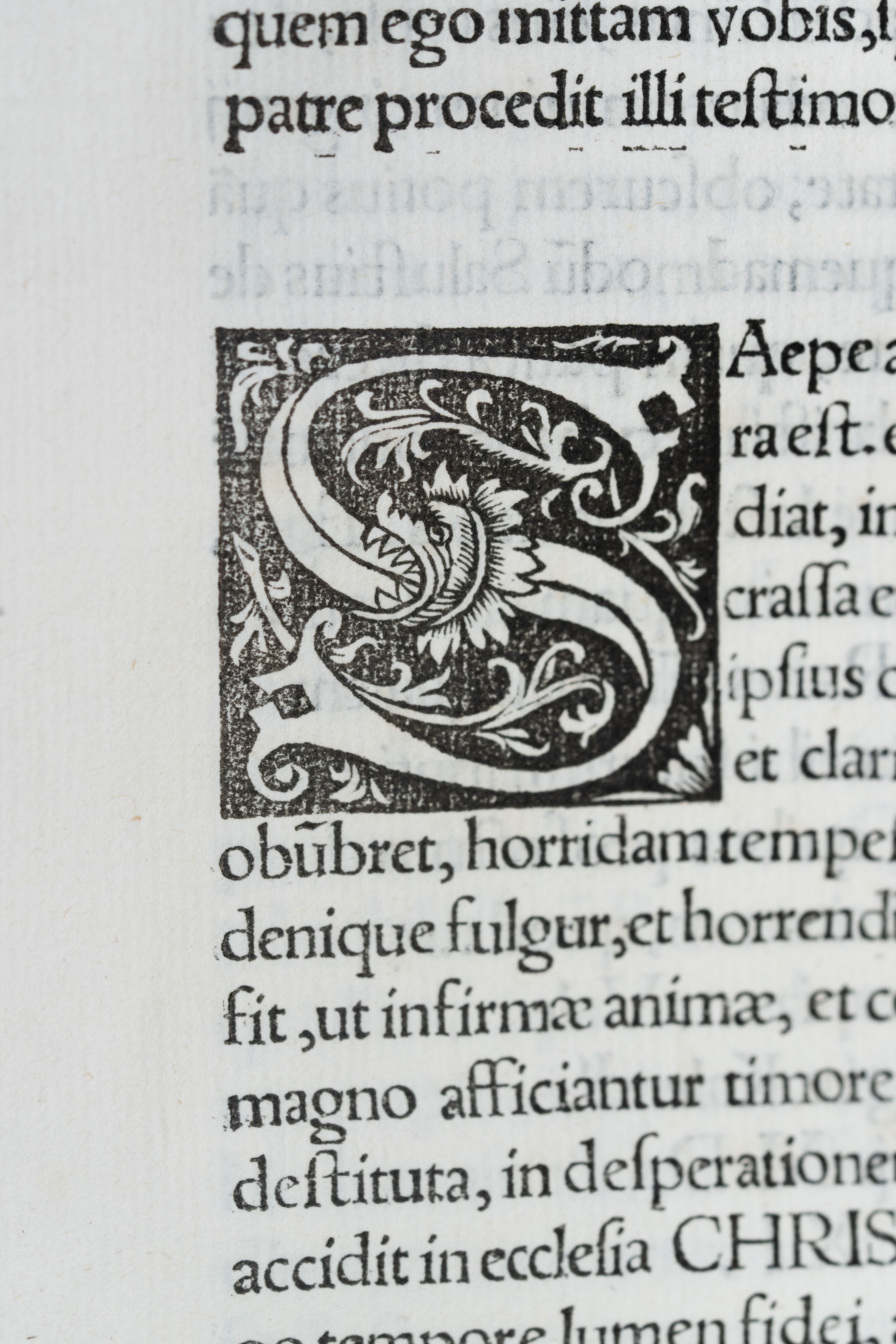
Five hundred years ago, John Siberch, the son of a German wool merchant, borrowed £20 from Cambridge University and set up the first printing press in the city.
He stayed in Cambridge only a short while before returning to Germany and dying, as far as records suggest, without ever repaying his debt.
Adjusting for a compound interest rate of 5% over the intervening five centuries, the debt would today stand in the hundreds of billions.
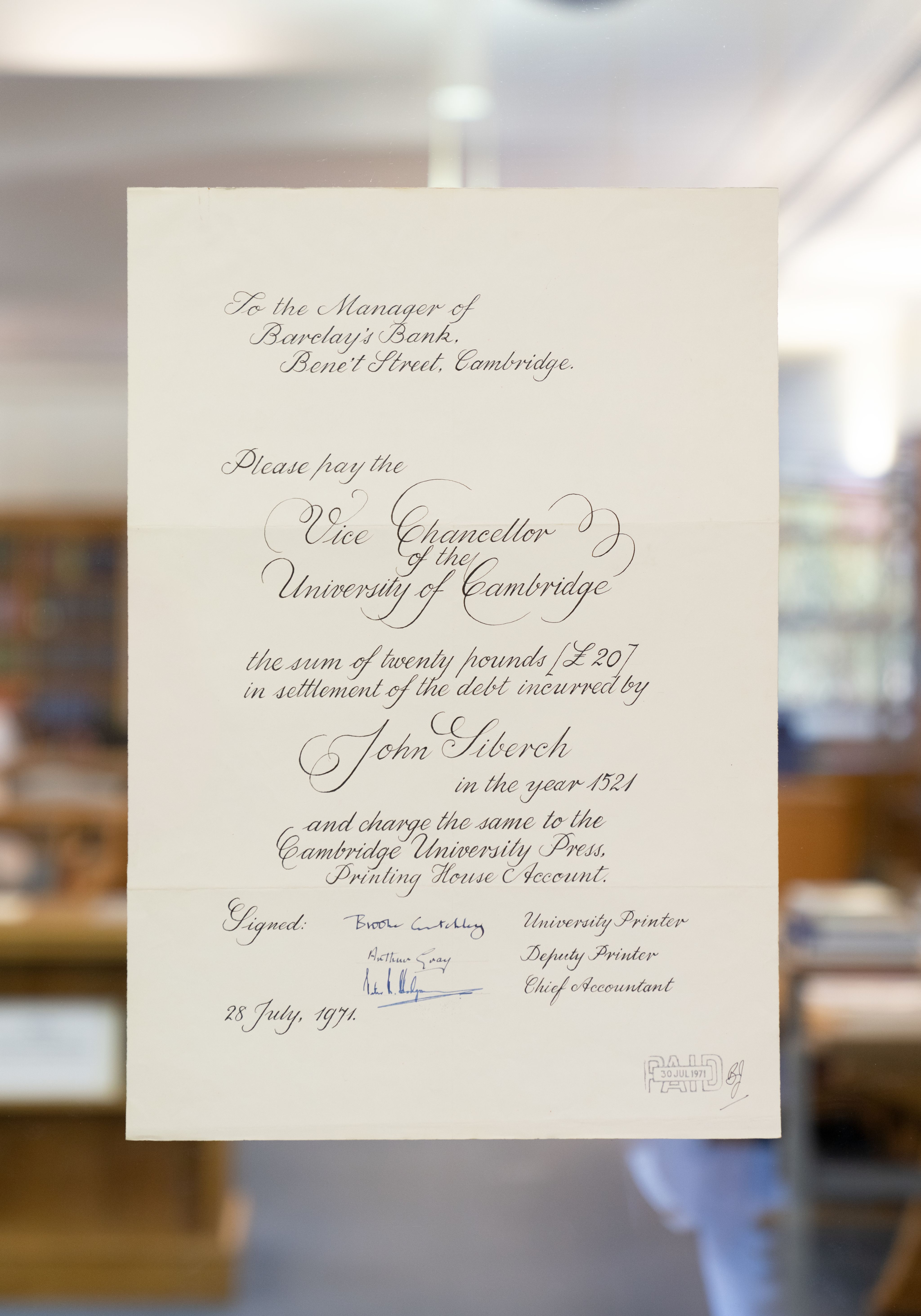
A 1971 cheque from Cambridge University Press instructing Barclay's Bank to repay to the University the debt owed by 16th century printer John Siberch.
A 1971 cheque from Cambridge University Press instructing Barclay's Bank to repay to the University the debt owed by 16th century printer John Siberch.
Fortunately for any descendants, the original sum was repaid and interest waived by the University in 1971, on the 450th anniversary of Cambridge’s first publication.
Today, Cambridge is known throughout the world for its University Press (CUP) – the oldest publishing house in the world. CUP published its first book in 1584, some 50 years after Henry VIII granted the University a Royal Charter to print ‘all manner of books’.
In the 21st century, it publishes more than 50,000 titles per year, by authors from more than 100 countries around the world.
But the story of printing in Cambridge is even older than the Press, and can be traced back to 1521, the year Pope Leo X excommunicated Martin Luther.
The works which Siberch printed touched upon some of the most significant issues of his day, including religious reform and the new humanist learning.
He also claimed with apparent justification to be the first person in England to print in Latin and Greek, as seen below.
Photo: Curator of the Library's Historical Printing Room Colin Clarkson with some of the University Library's Siberch material. Image by Blazej Mikula.
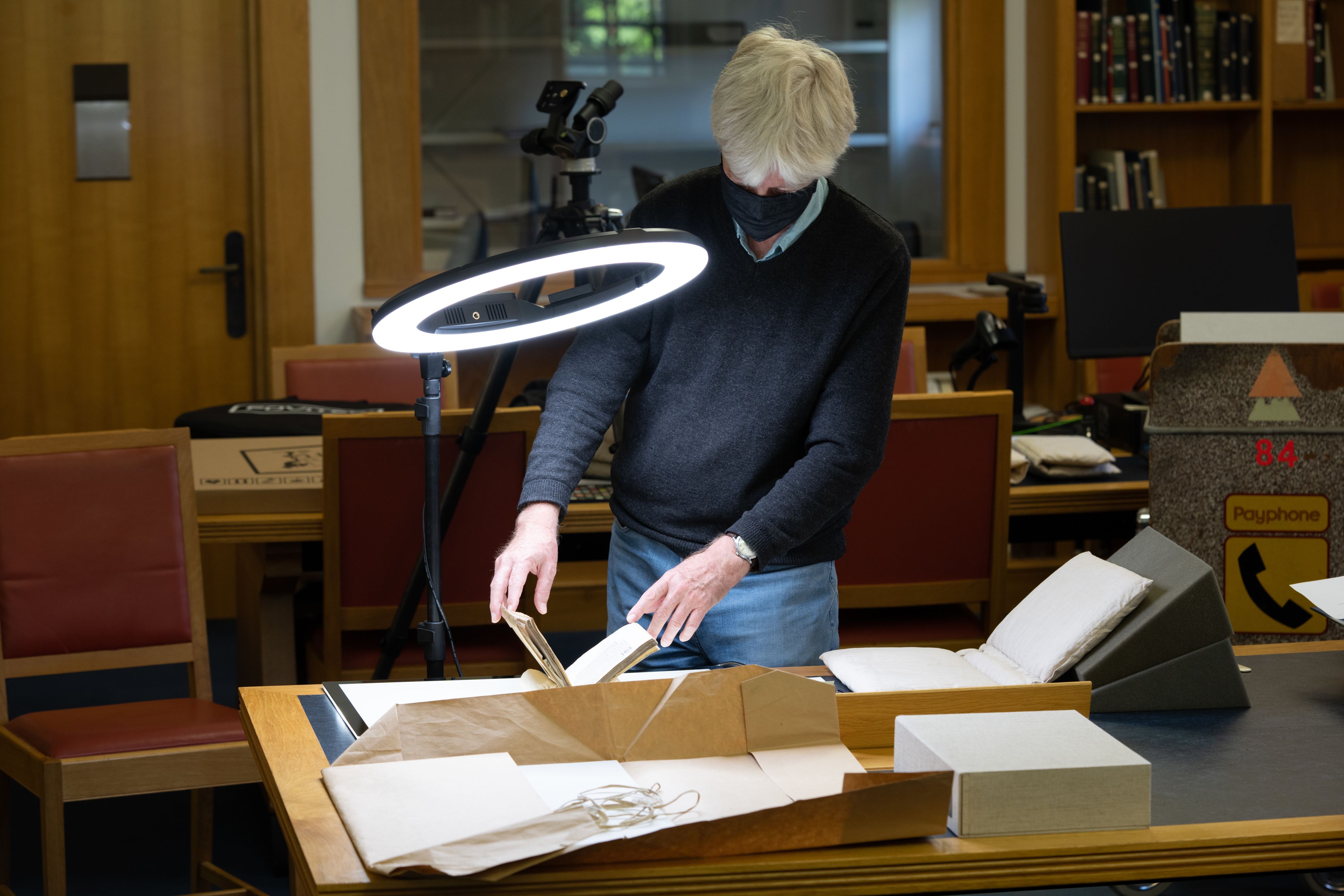
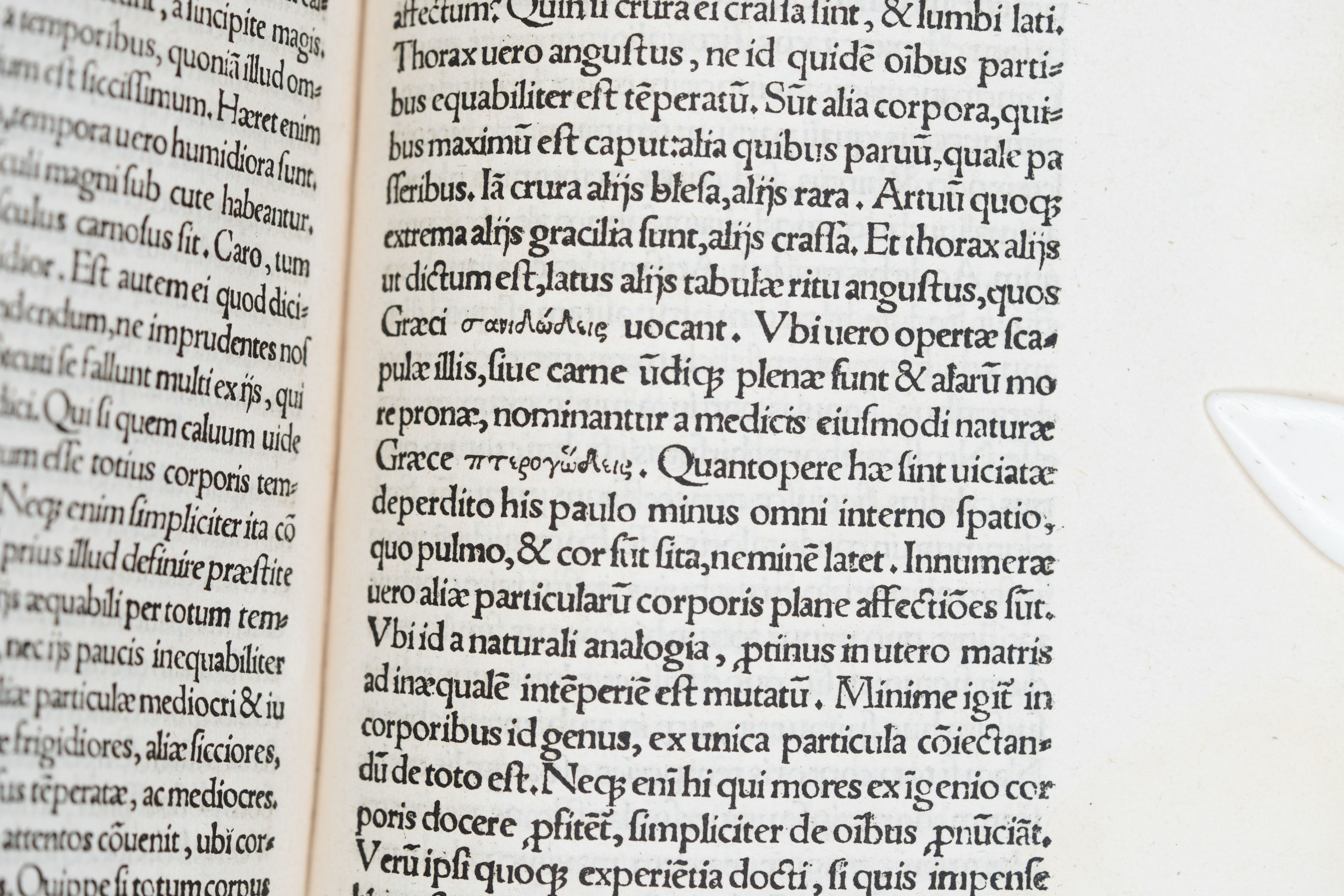
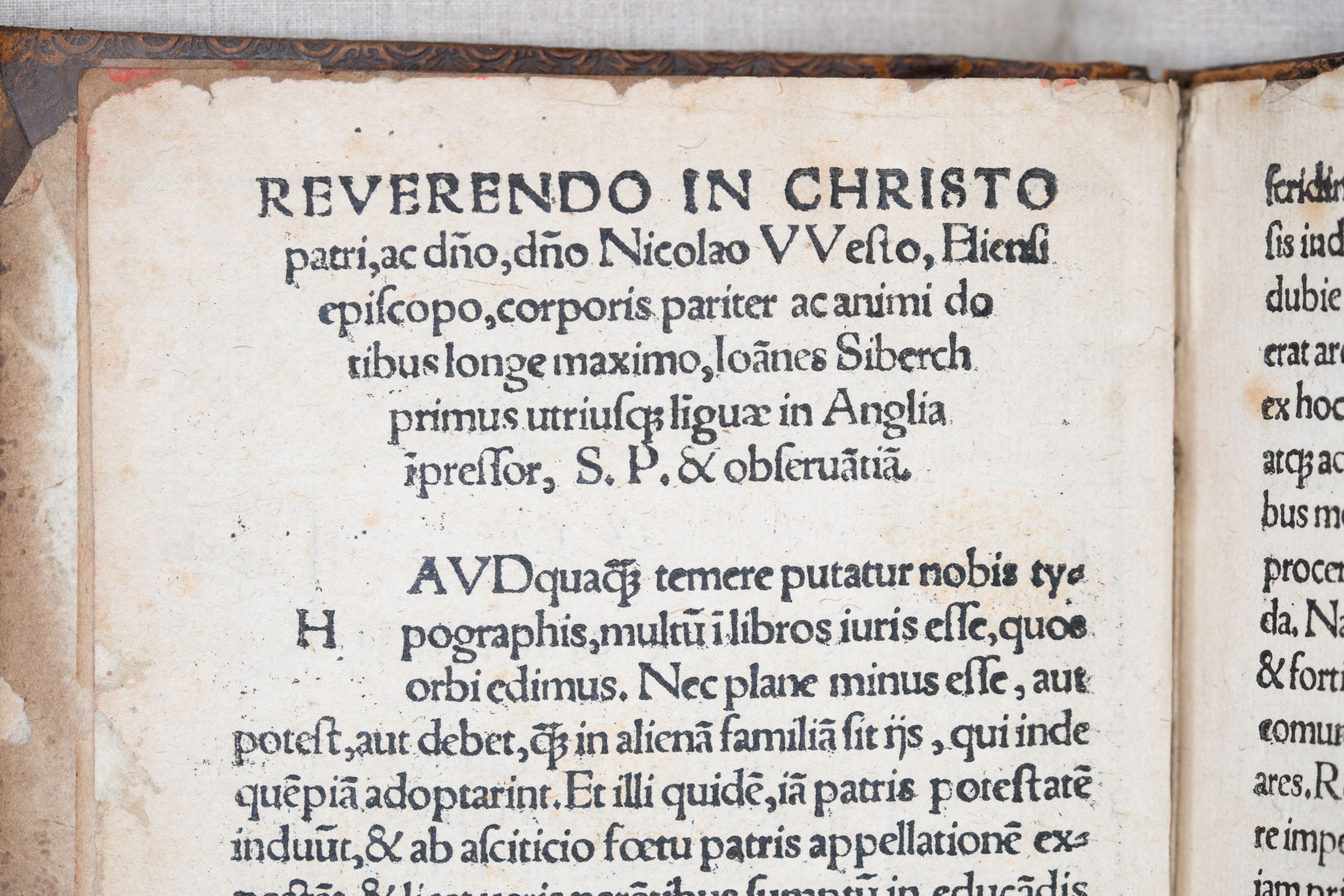

What is believed to be one of the earliest examples of printing in England using Greek characters.
What is believed to be one of the earliest examples of printing in England using Greek characters.

Dedication in which Siberch claims to be the first in England to print in both languages (Latin and Greek).
Dedication in which Siberch claims to be the first in England to print in both languages (Latin and Greek).
The first work ever printed in Cambridge, by Siberch in 1521, was the text of a speech delivered by Henry Bullock of Queens’ College to welcome Cardinal Wolsey on the occasion of his visit to the city in the autumn of the previous year.
Of the speech a nineteenth-century historian wrote: “Scarcely from the obsequious senators of Tiberius and Domitian did the incense of flattery rise in denser volume or coarser fumes.”
Bullock’s flattery clearly worked. He became chaplain to the cardinal.
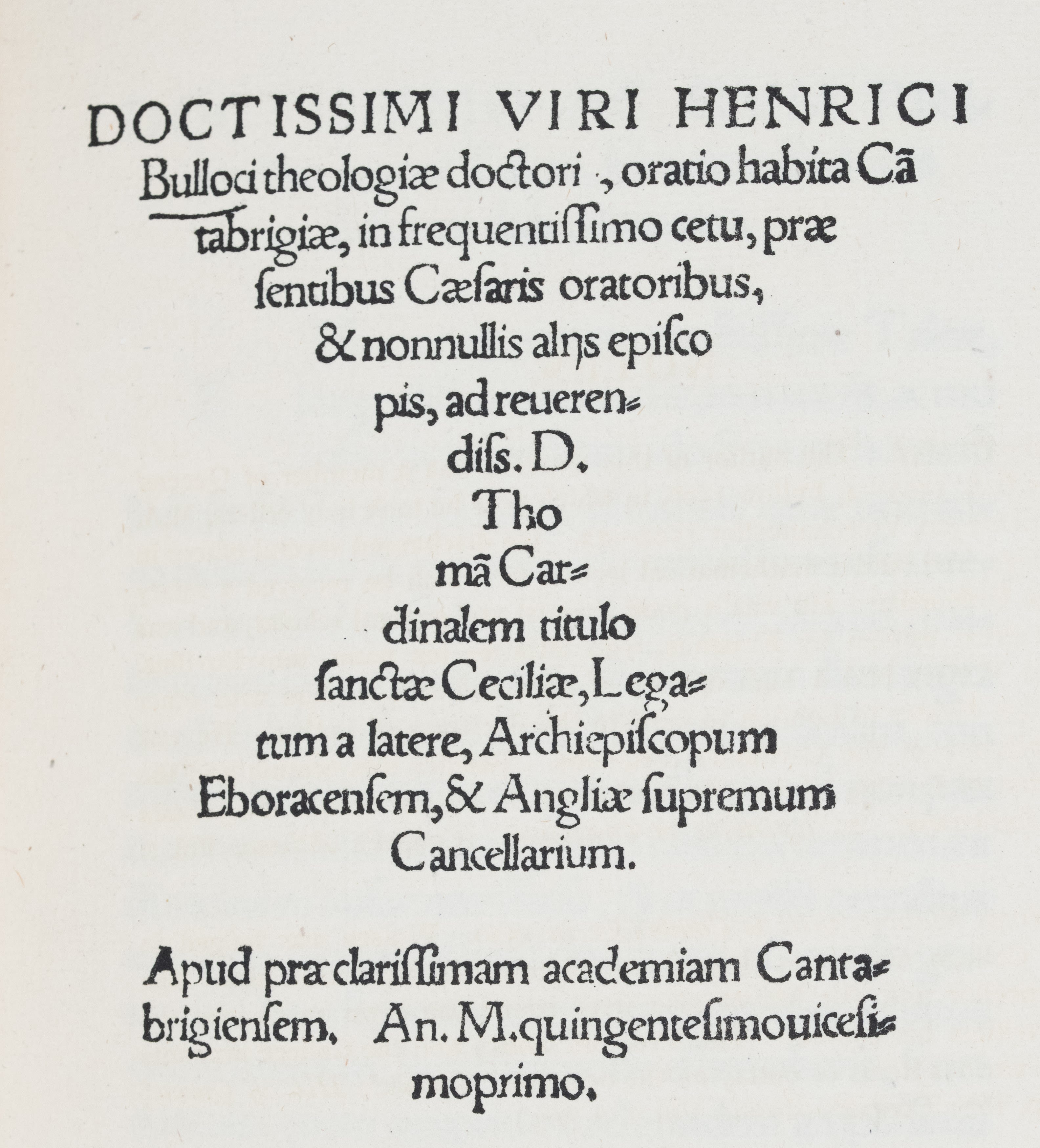
The title page of the first book to be printed in Cambridge in 1521.
The title page of the first book to be printed in Cambridge in 1521.
Siberch was born around 1476 in the western German village of Sieglar. As a child he moved with his parents to the nearby city of Siegburg, a form of whose name he later adopted as his own: Johann de Syberch.
After university study in Cologne he entered the book trade as brother-in-law to the Cologne publishers Franz and Arnold Birckmann and to the printers Johannes Grapheus of Antwerp and Servaes van Sassen of Louvain.
Siberch arrived in Cambridge most probably in 1520, perhaps at the suggestion of Richard Croke, recently appointed to a lectureship in Greek, an edition of whose Greek grammar he had published earlier that year in Cologne.
He brought with him his wife, whose name is unknown, two young daughters, Katharina and Beatrix, a small stock of type and a few decorative printing blocks.
With the help of the aforementioned £20 loan from the University, underwritten by four members including Henry Bullock, he set up as a printer, binder and bookseller in a building known as the King’s Arms on the site of Tree Court in Gonville and Caius College, seen in the bottom right of the map below, just above the church spire of St Michael's Church.
Siberch’s known output is small: ten slight books, an almanac and two single-sheet documents for religious houses. One book survives in a single copy, five items are known only from fragments preserved in the binding of other books.
However, the authors and translators comprise many of the major contemporary figures of church, state and academia, including bishop John Fisher of Rochester, Richard Pace, Secretary of State to Henry VIII, the royal physician Thomas Linacre and, above all, the great humanist scholar Desiderius Erasmus and his circle.
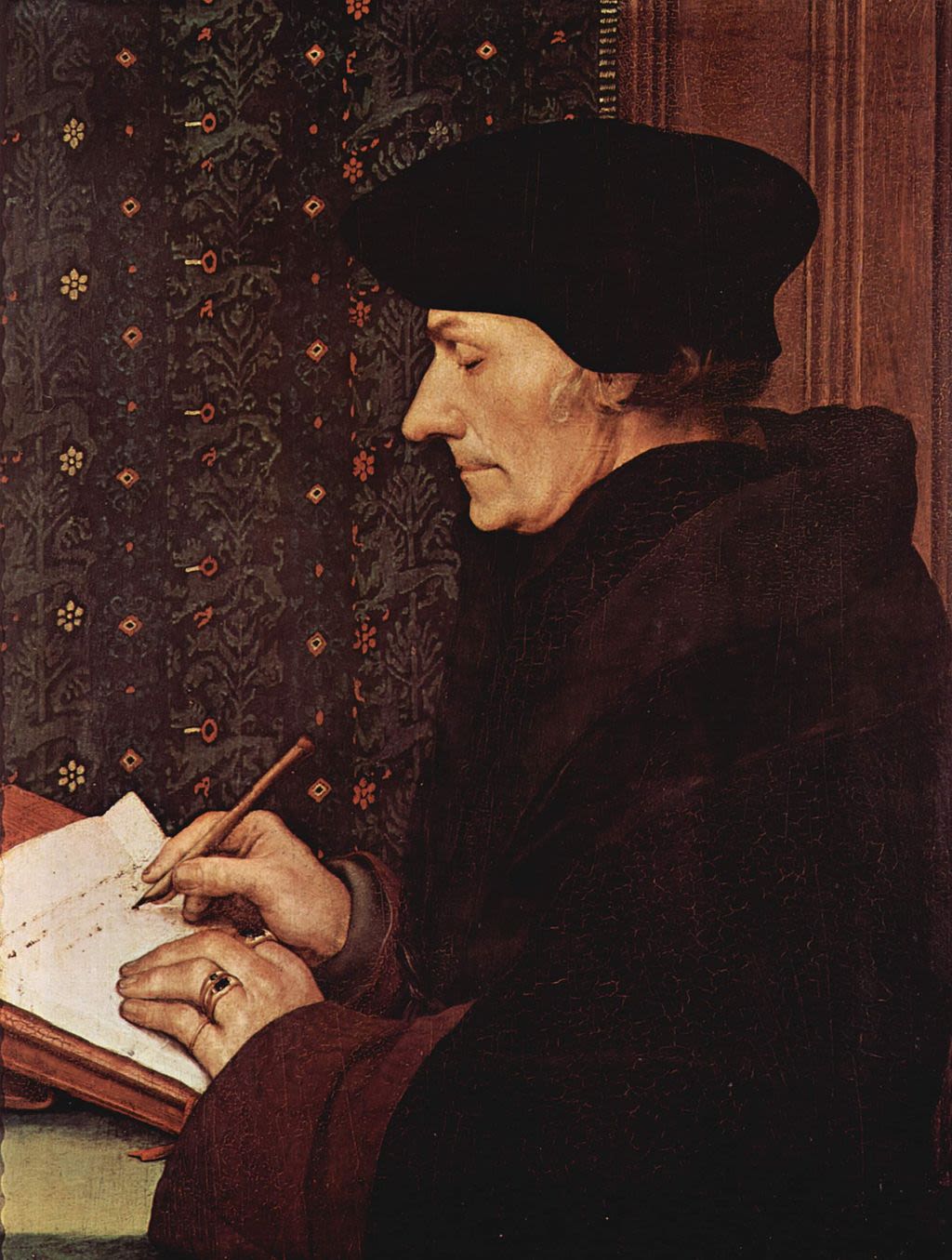
Erasmus by Hans Holbein. Credit: Louvre Museum.
Erasmus by Hans Holbein. Credit: Louvre Museum.
These men embraced the still new print medium in various ways to promote their careers, advertise their skills and propound their ideas.
One such example was the speech delivered by bishop Fisher on the occasion of the burning of Luther’s books before St Paul’s Cathedral, London, on 12 May 1521 and translated into Latin by Pace for the convenience of Pope Leo X. This followed Luther's own burning of the Papal bull in Wittenberg a year earlier.

Martin Luther (1529) by Lucas Cranach the Elder. Credit: Wiki Commons.
Martin Luther (1529) by Lucas Cranach the Elder. Credit: Wiki Commons.
There was a bonfire at Cambridge too, Dr Nicholas, the deputy Vice-Chancellor, being reimbursed for “drink and other expenses in connection with the burning of the books of Martin Luther”.
Fisher himself, Chancellor of the University, was later executed for treason on 22 June 1535.
In an attempt perhaps to boost his income, Siberch also printed a number of more popular titles, including a Latin grammar compiled by William Lily, first master of St Paul’s School, London, with revisions by Erasmus, and the first edition of the first eclogue, of Alexander Barclay, perhaps written while a monk at Ely.
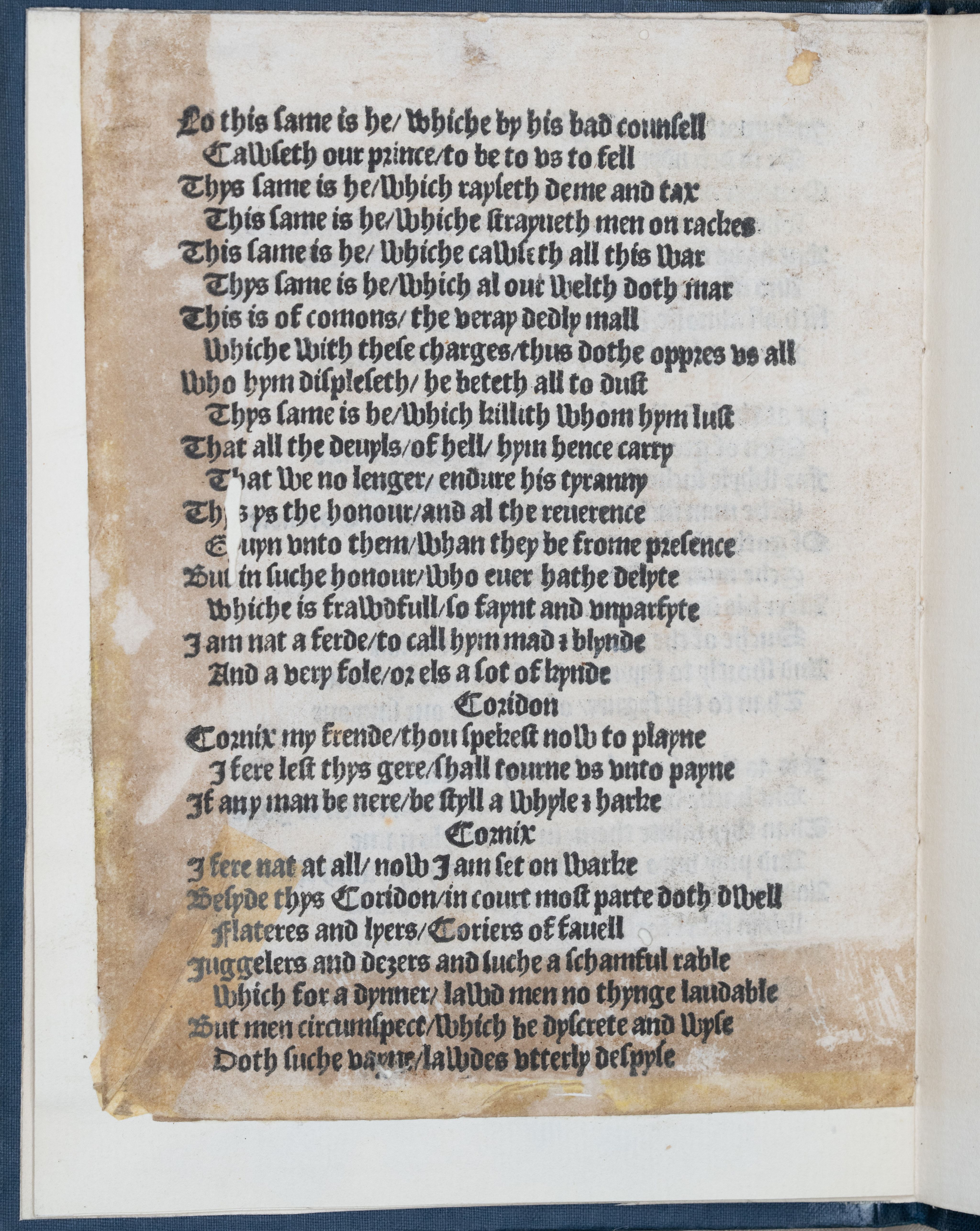
Page of the first eclogue of Alexander Barclay recovered from the binding of a later work.
Page of the first eclogue of Alexander Barclay recovered from the binding of a later work.
He also risked a bootleg edition of Erasmus’s guide to letter-writing, concluding with a template for a “iocosa epistola”. Erasmus was not amused; he had an agreement for prior publication with Johan Froben of Basel.
In the first authorised edition he complains: “There is nothing a printer would be ashamed to do”. Siberch, however, was forgiven. A few years later Erasmus included him among the “old companions” to whom he sent Christmas greetings.
However, Siberch was a novice printer. As far as we know he printed nothing either before or after his time in Cambridge. In a preface he appeals: “Forgive me, dear reader, considering that I am an inexperienced beginner … I freely confess that in printing this book I have made many mistakes.”
There are two misprints on the title-page, pictured, of what may be a proof copy of his edition of a sermon by Baldwin, a twelfth-century archbishop of Canterbury.
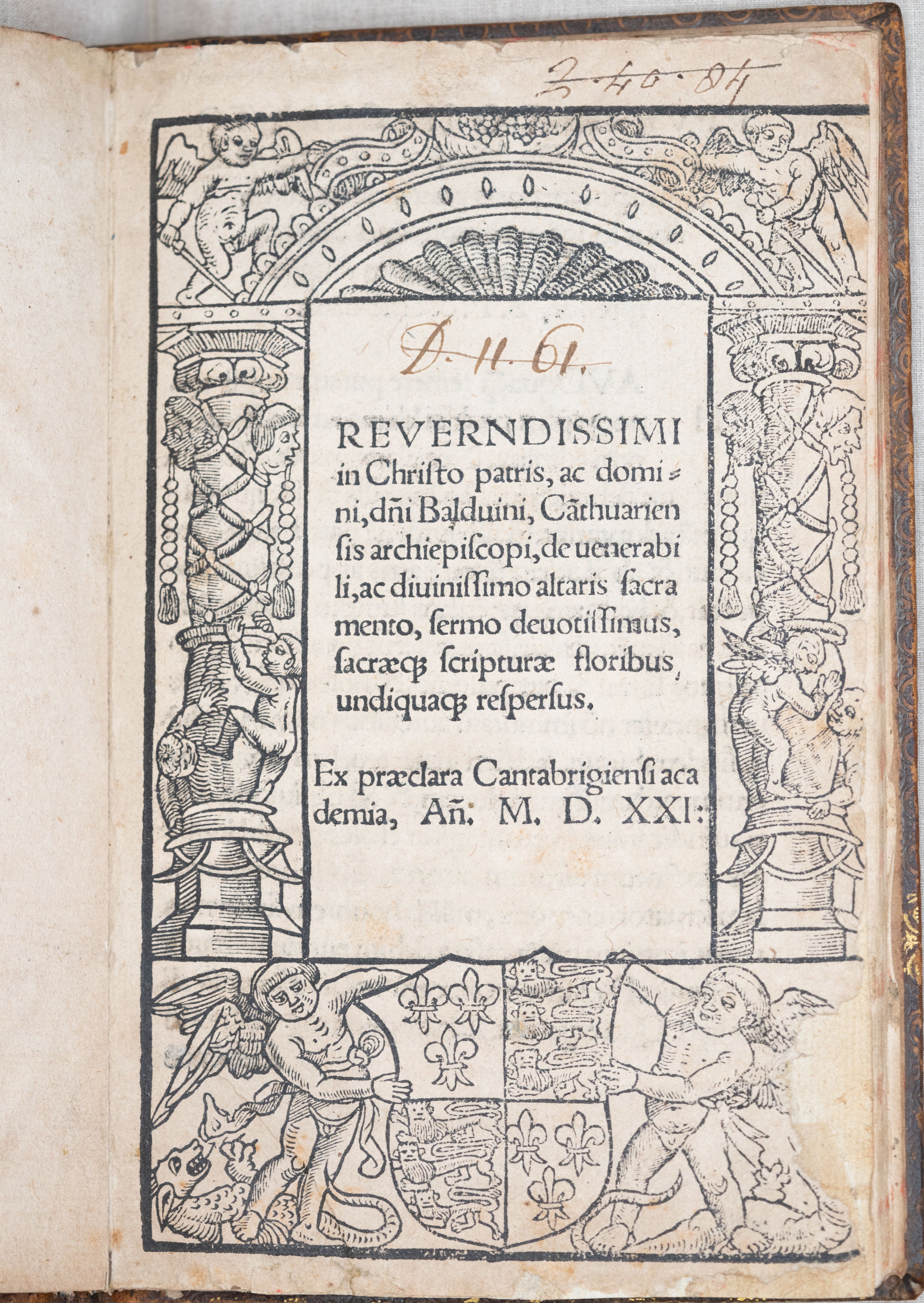
In the deluxe copy of his Galen, printed on vellum, which Thomas Linacre evidently presented to Henry VIII, the pages of the final section appear in the wrong order, having been incorrectly arranged on the press.
Perhaps translator and printer hoped the King would not read to the end. Siberch also had a limited range of type and printing blocks. A woodcut Adoration of the Shepherds (seen below) appears incongruously at the end of the first impression of Linacre’s Galen. Nor did he possess a complete alphabet of decorated capitals; an inverted G had to serve for Q (bottom image).
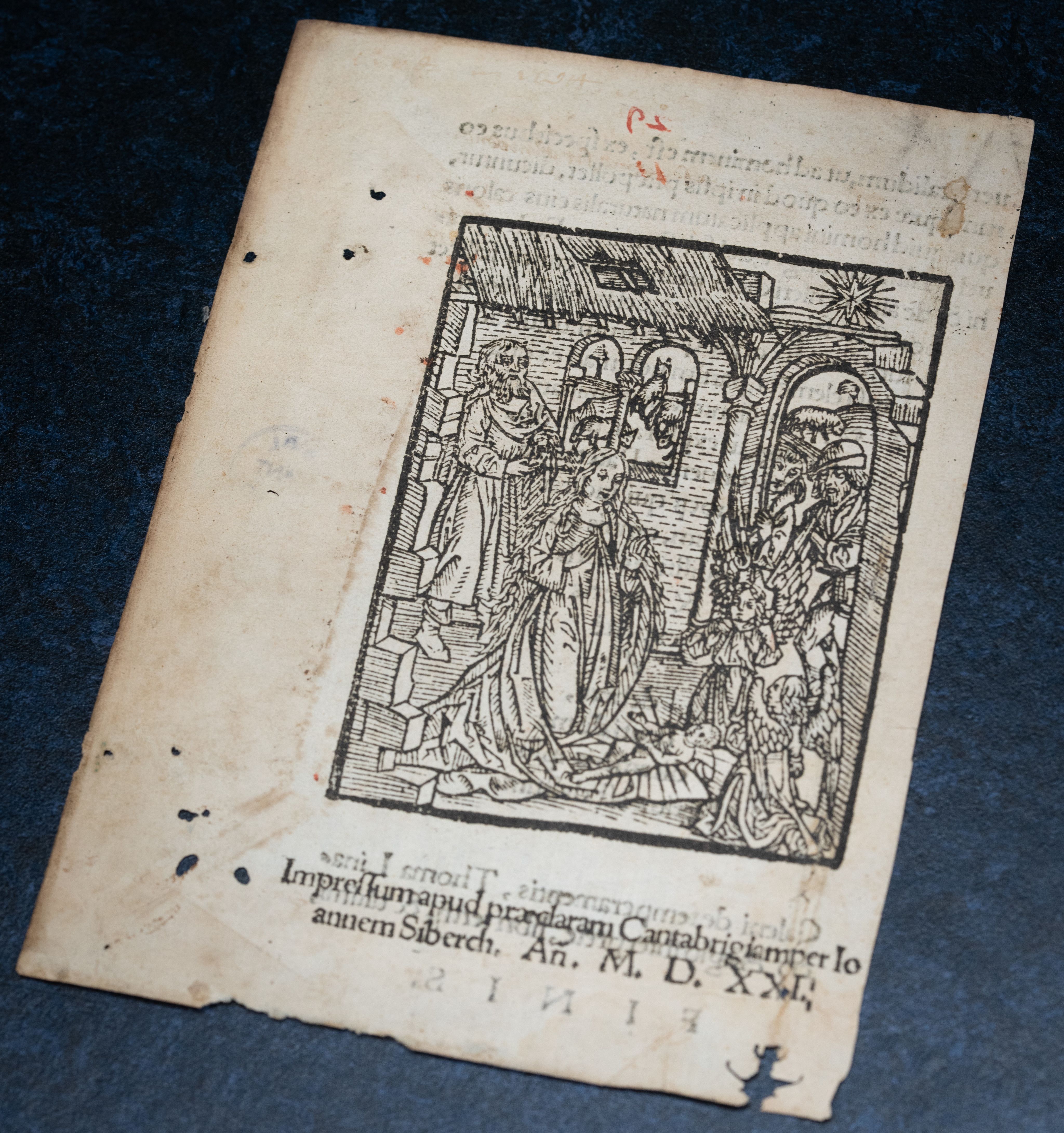
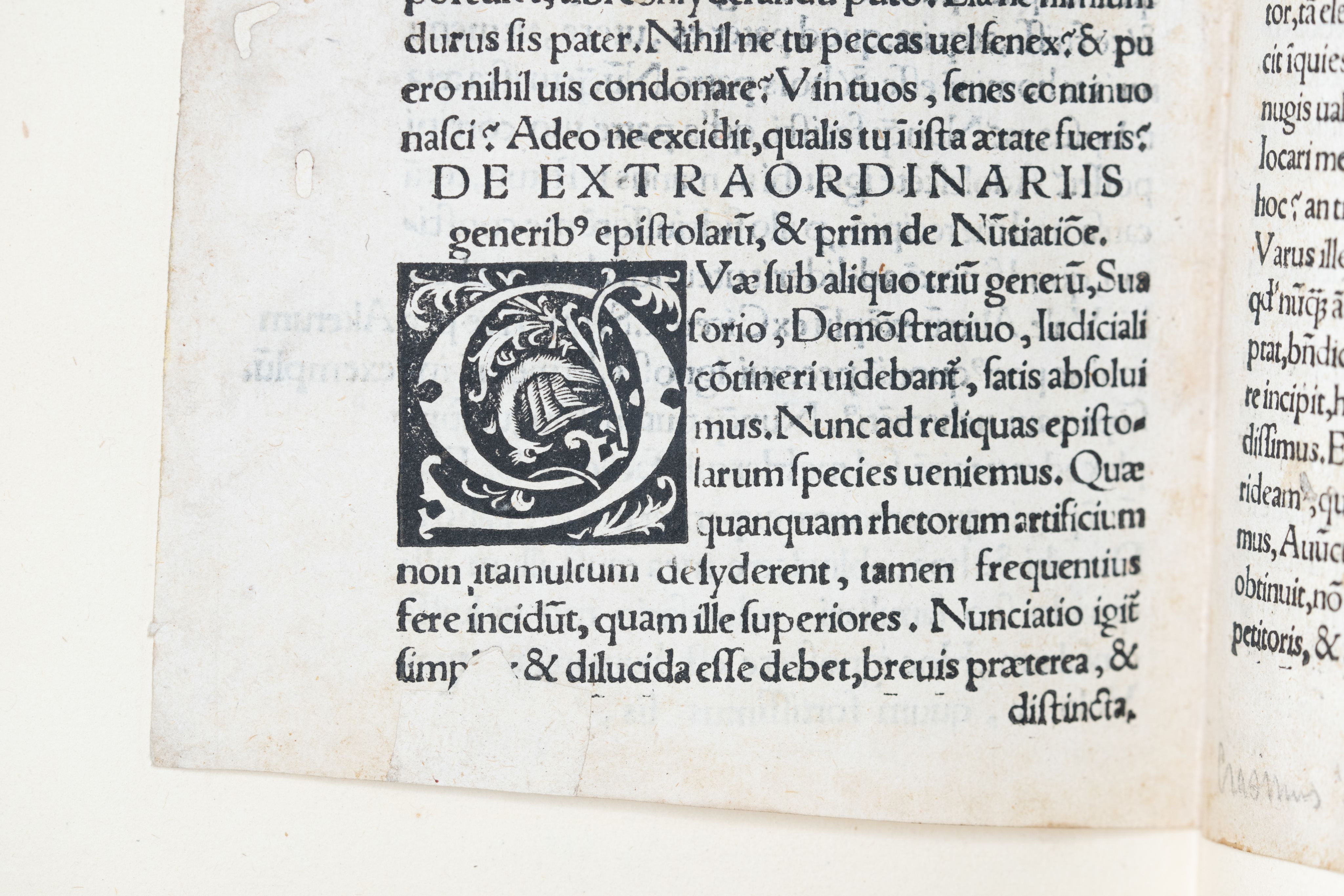
Siberch’s Cambridge venture was short-lived and not, it seems, a great success. There is no record of him in the city after 1523. A widower, he returned to Siegburg and took holy orders.
Records suggest he came back to England, serving as a priest in Southwark for several years.
He died, however, in Siegburg in 1554, unaware of quite what he had started in Cambridge. Although Cambridge University was granted the right to appoint printers and stationers by Letters Patent of Henry VIII on 20 July 1534, the first University Printer, Thomas Thomas, did not take office until 1583, publishing his first book a year later.
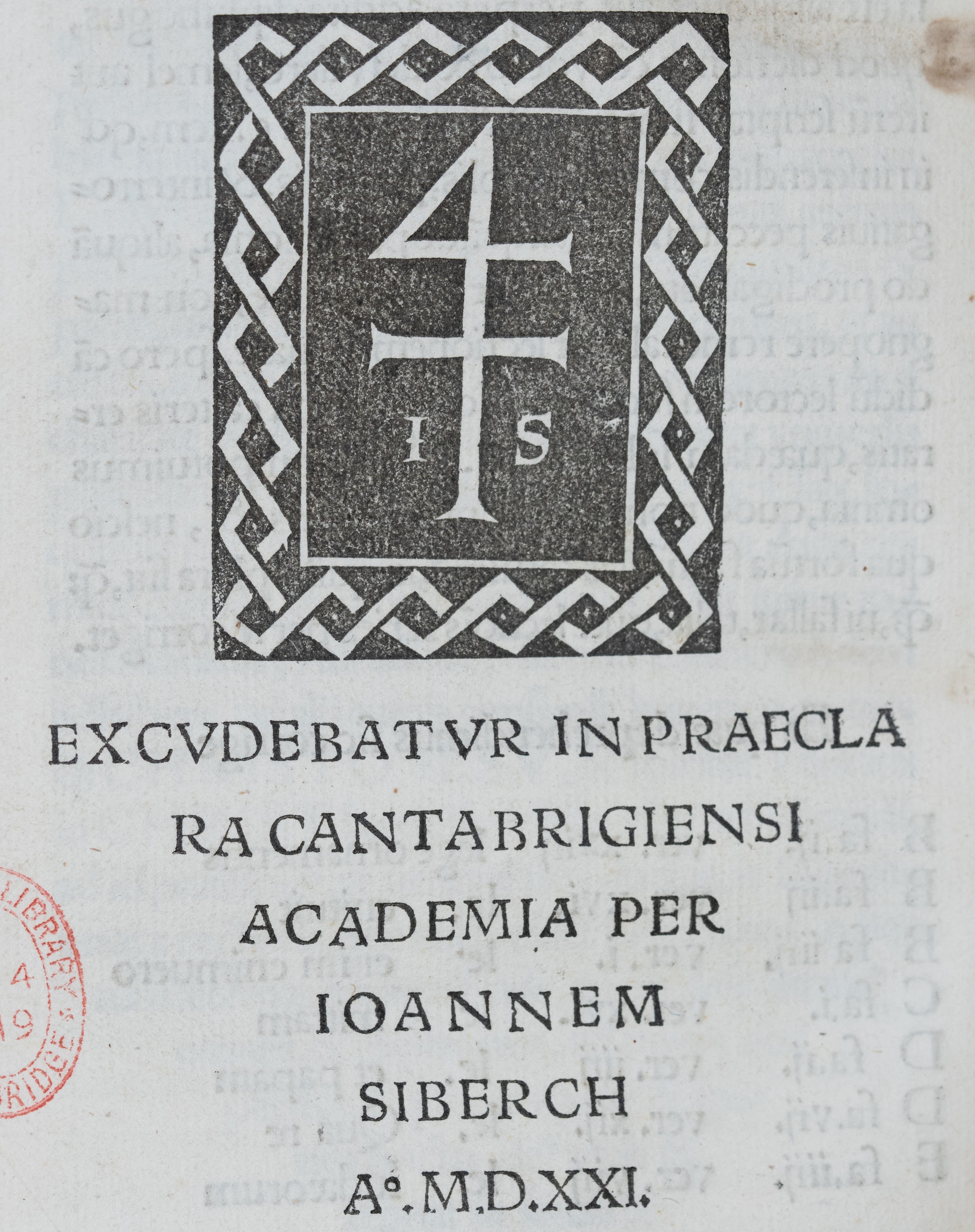
The printer's mark, used in the colophon at the end of several of Siberch's printed works. The text translates as: 'Printed in the famous academy at Cambridge by John Siberch, 1521.'
The printer's mark, used in the colophon at the end of several of Siberch's printed works. The text translates as: 'Printed in the famous academy at Cambridge by John Siberch, 1521.'
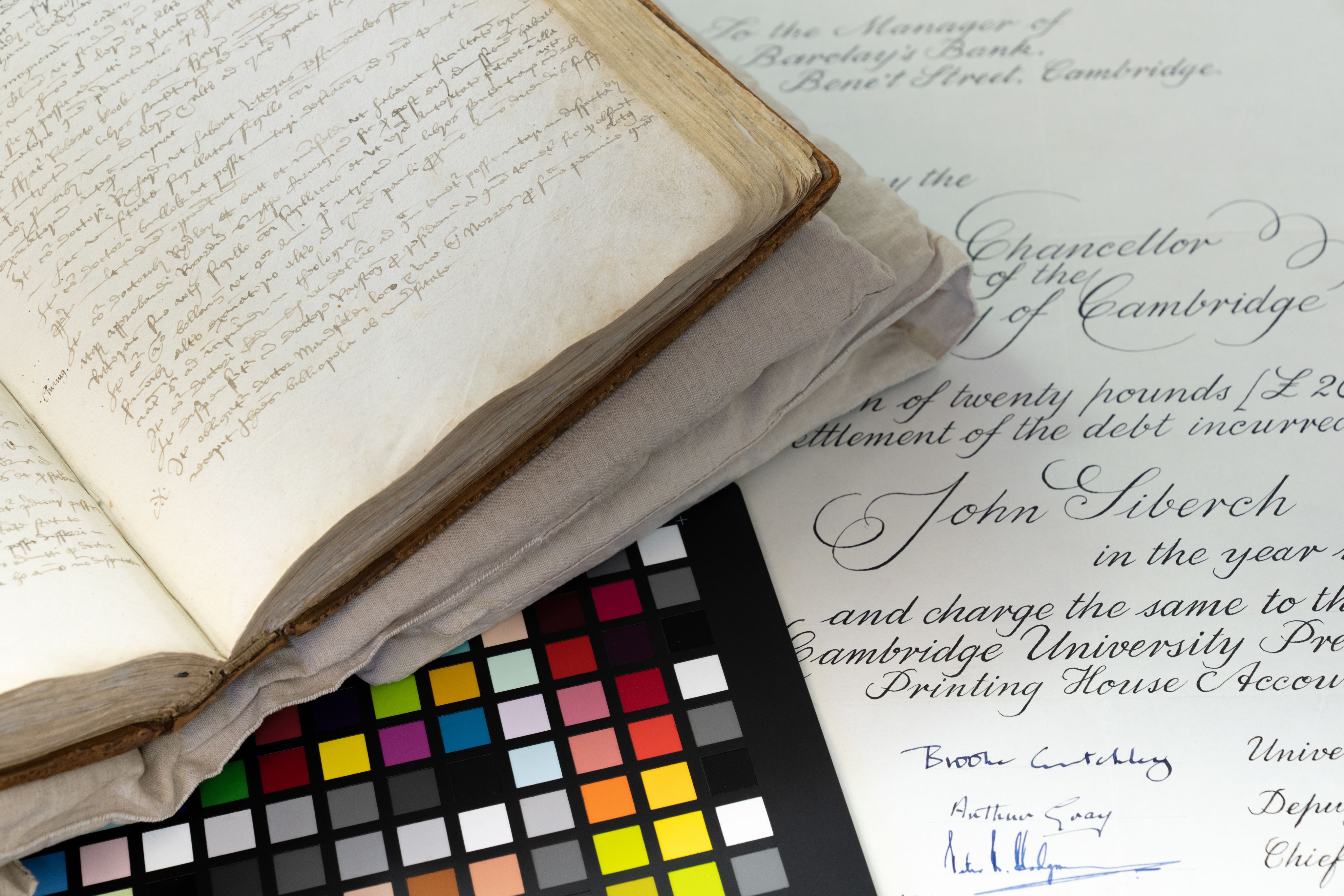
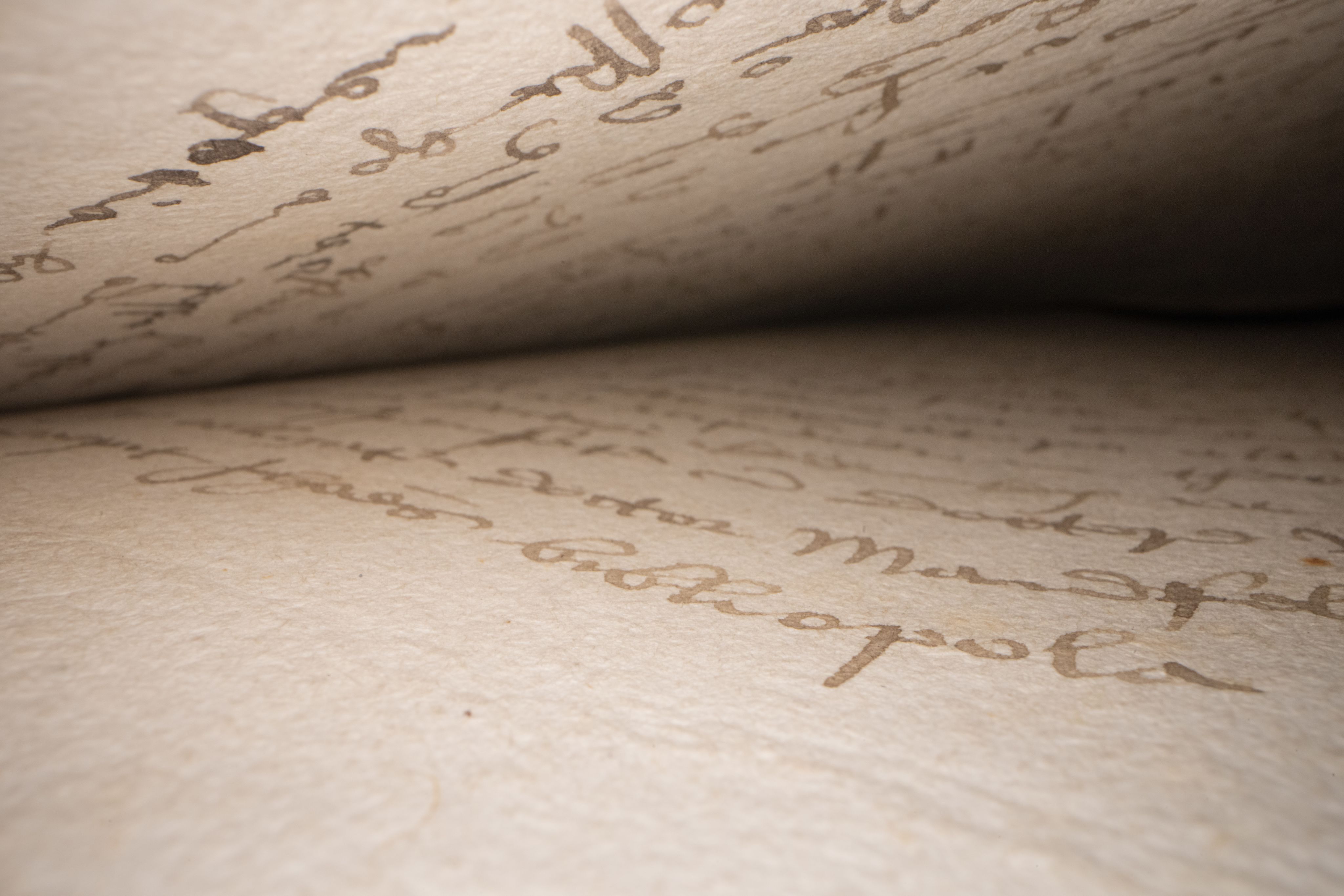
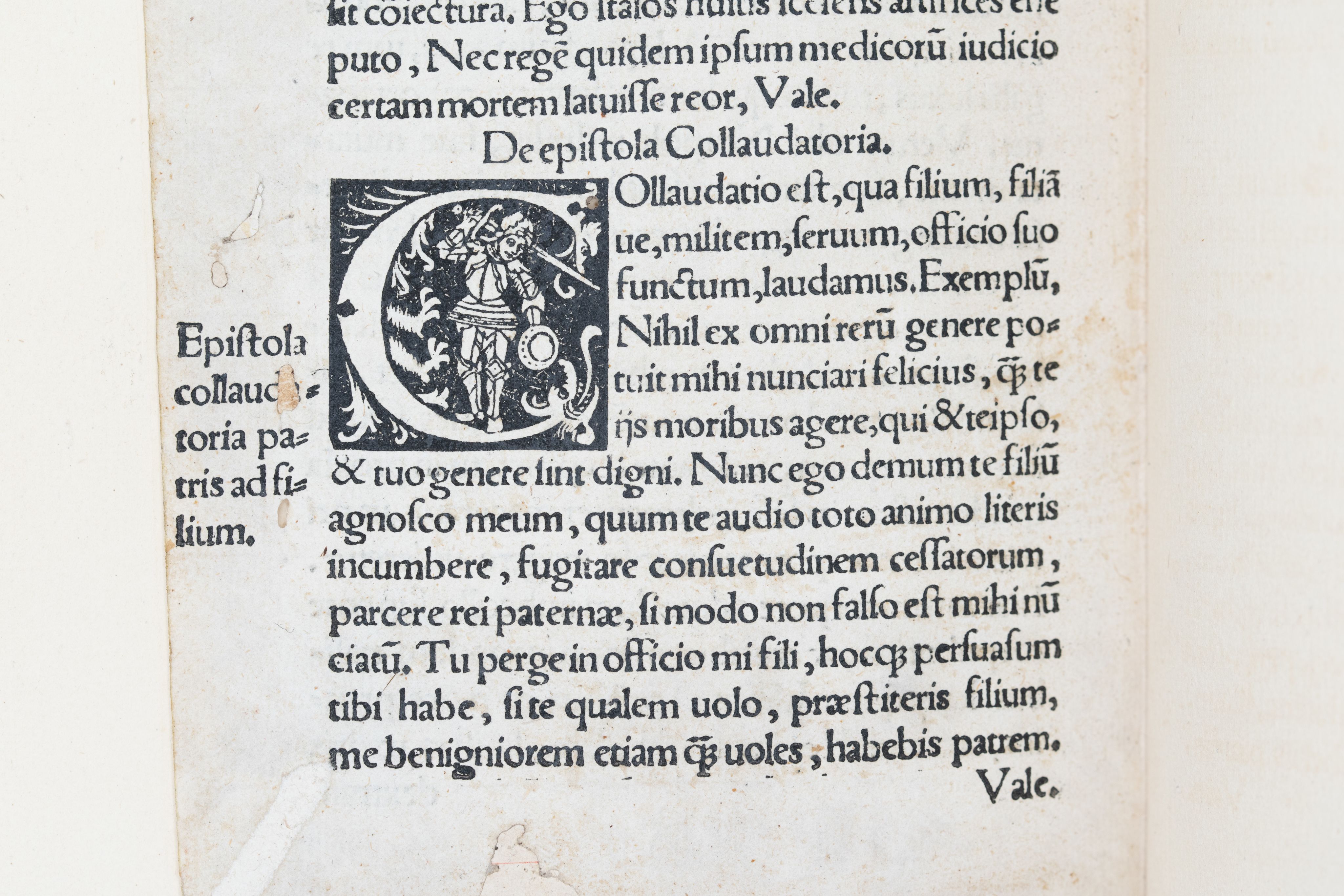
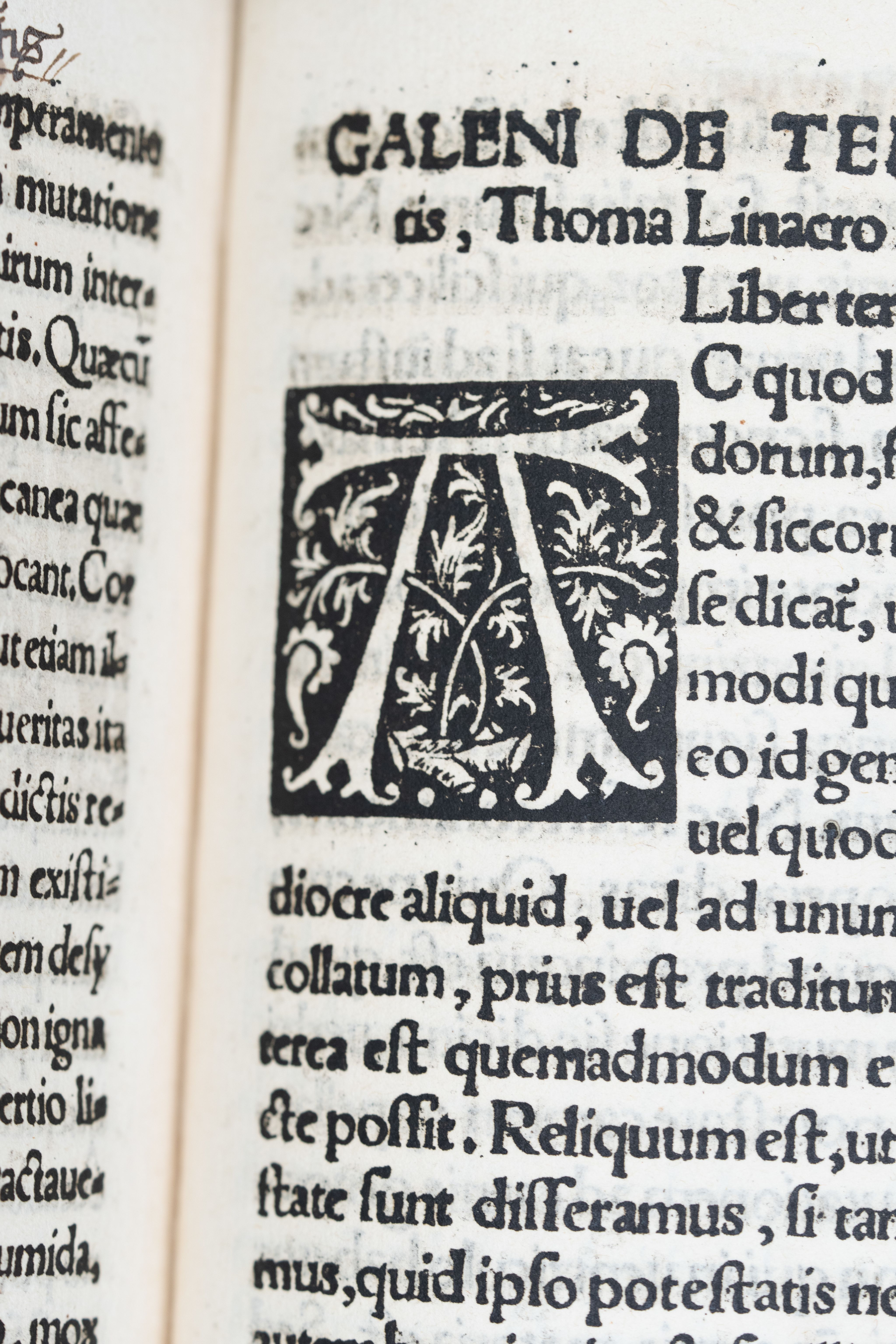
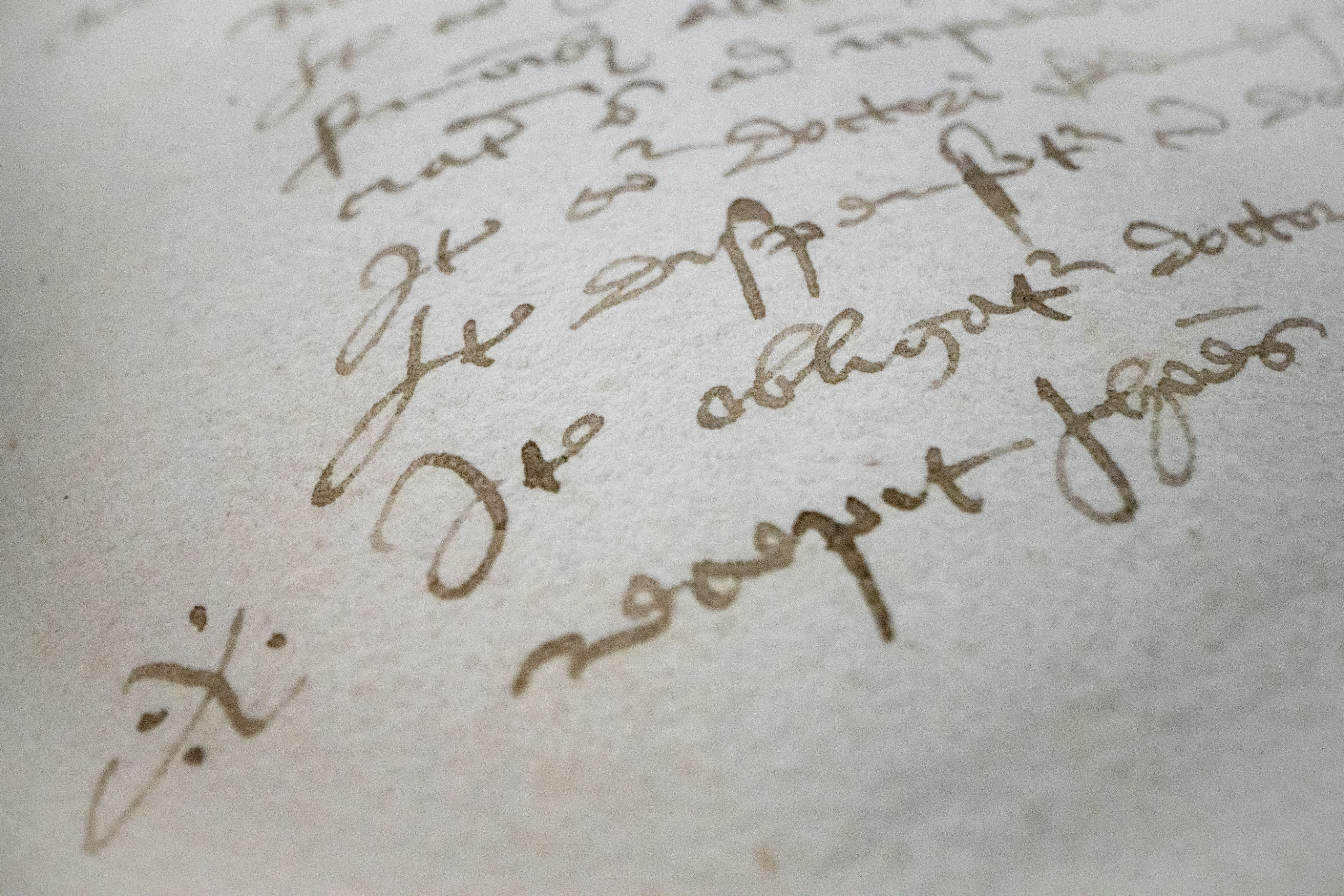
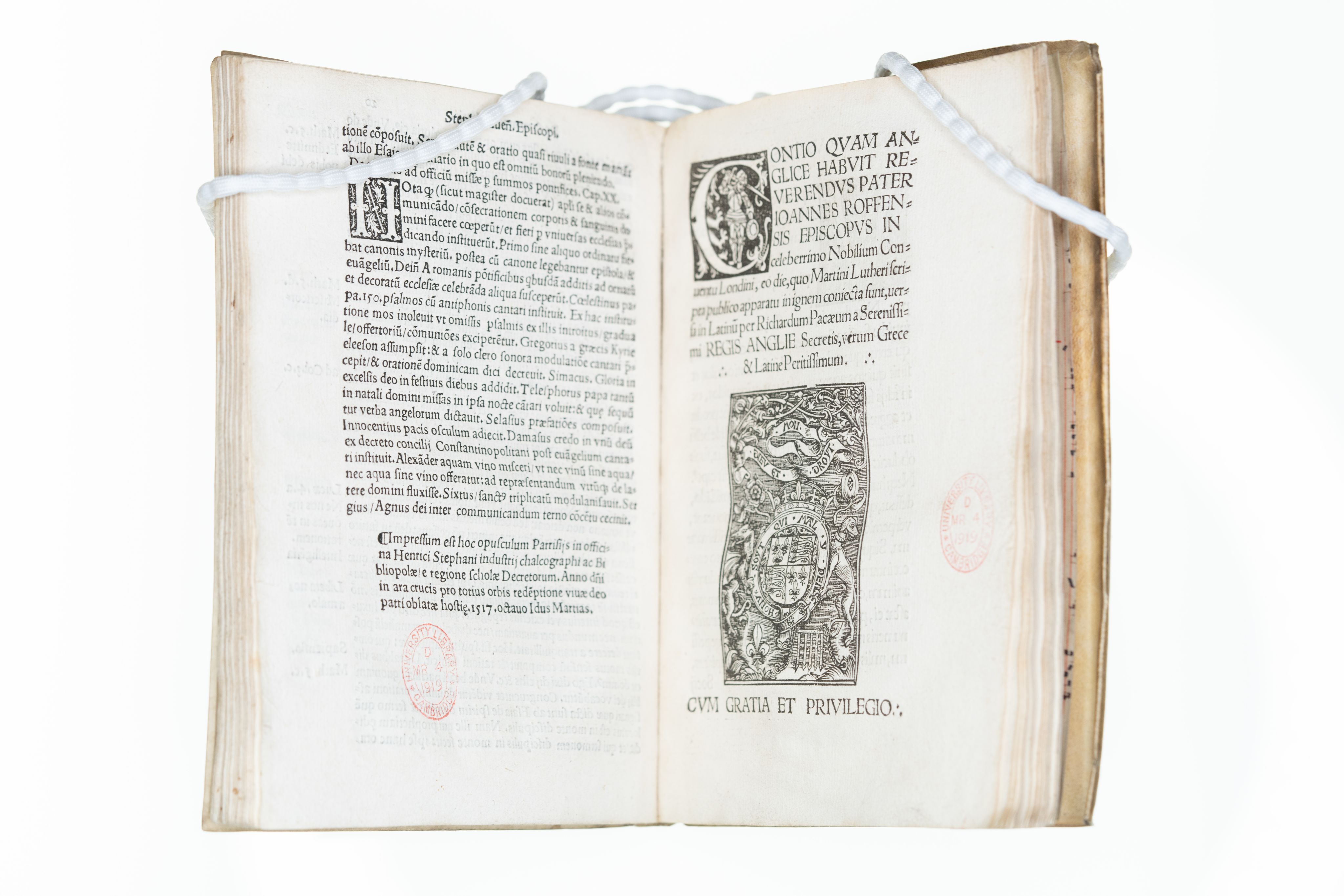

First record, in the Grace Book covering 1520/1, of the University's loan to Johannes bibliopola (John the bookseller) and the 1971 cheque in repayment.
First record, in the Grace Book covering 1520/1, of the University's loan to Johannes bibliopola (John the bookseller) and the 1971 cheque in repayment.


Decorated capital C used by Siberch.
Decorated capital C used by Siberch.

Decorated capital A used by Siberch.
Decorated capital A used by Siberch.

The first record of the University’s loan to Siberch.
The first record of the University’s loan to Siberch.

Title page of John Fisher's speech on the burning of the books of Martin Luther (Sel.5.162 {3})
The title page of John Fisher’s speech on the burning of the books of Martin Luther.

Classmarks for the images used:
- Decorated capital S used by Siberch (Sel.5.162 {3}, f. B3 verso)
- 1971 cheque (GBR/0265/UA/Pr.P.5)
- Text showing Greek characters (SSS.23.17, f. K4 recto)
- Dedication to Nicholas West, including statement “primus utriusque linguae in Anglia impressor” (Syn.7.52.20, t.p. verso)
- Title page beginning “Doctissimi viri Henrici Bulloci …” (Syn.7.88.17, t.p. of facsimile)
- Map of Cambridge (Atlas.2.92.1, portfolio, map 4 (detail))
- First eclogue of Alexander Barclay (Syn.7.53.25)
- Title page beginning “Reverndissimi in Christo patris …” (Syn.7.52.20, t.p.)
- Adoration of the shepherds woodcut (Syn.7.52.21a)
- Capital Q/G (Syn.6.52.16)
- Printer’s mark (Sel.5.162 {3}, f. G3 verso)
- First record, in the Grace Book covering 1520/1, of the University’s loan to Johannes bibliopola (John the bookseller) and the 1971 cheque in repayment (GBR/0265/UA/Grace Book Gamma, f. 105 recto and GBR/0265/UA/Pr.P.5)
- Decorated capital C used by Siberch (Syn.6.52.16)
- Decorated capital A used by Siberch (SSS.23.17, f. M4 recto)
- The first record of the University’s loan to Siberch (GBR/0265/UA/Grace Book Gamma, f. 105 recto)
- Title page of John Fisher's speech on the burning of the books of Martin Luther (Sel.5.162 {3})
The text in this work is licensed under a Creative Commons Attribution 4.0 International License.
